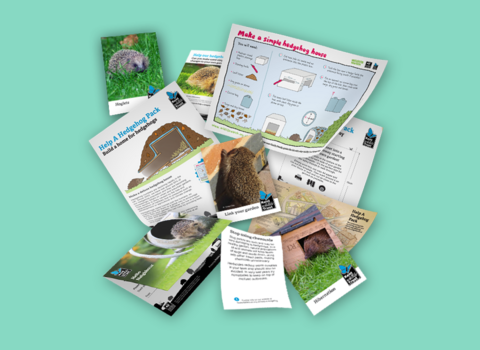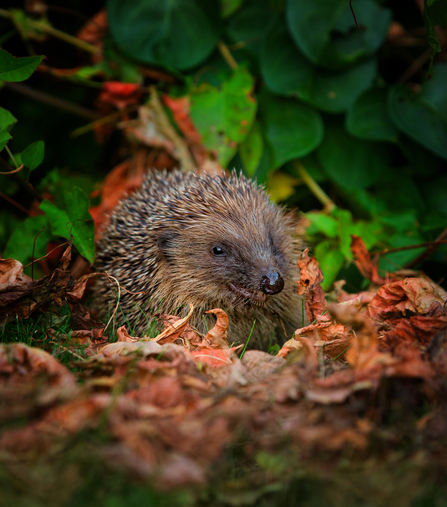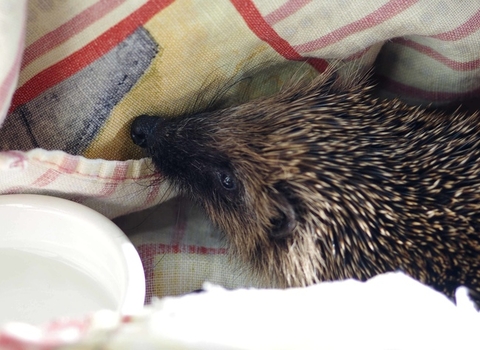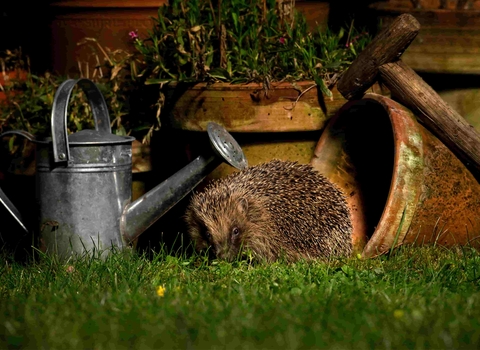Hedgehogs
The European hedgehog (Erinaceus europaeus) is Britain’s only spiny mammal. Instantly recognisable, they have a coat of up to 7,000 spines that hangs around their body like a skirt, concealing grey fur on their underside, long legs, and a short tail.
As distant relatives of shrews, hedgehogs have changed little in the past 15 million years. They can be found across a wide range of rural and urban habitats including your very own back garden here in Kent. It’s no surprise that they’re often referred to as the gardener’s friend due to their careful habits and diet of common garden pests such as slugs, snails, and caterpillars.
But as more gardens are cemented over, and pesticides used to kill the insects they depend on, hedgehogs are finding it harder to find the food and shelter they need to survive and rear young hoglets.

Hedgehog sightings are dropping every year
There are fewer sightings each year and the majority of children today have never seen a wild hedgehog at all. In 2020, hedgehogs were put on the IUCN Red List, marking them as vulnerable to extinction in Great Britain. Indeed, over half of their population has been lost from our countryside since the millennium and they have disappeared from a third of sites in cities and towns.
Be one of the people prepared to make a difference. Download our free digital Help A Hedgehog pack now and read useful tips and guides on things you can do at home and in your neighbourhood to help your local hedgehogs.

Photo by Jon Hawkins
Tunnel together.
Hedgehogs travel 2 to 3km a night looking for food or a mate so don’t let your garden be an obstacle course. A 13cm hole cut in the base of fences and walls provides a perfect tunnel and access route for hedgehogs to travel through.
Invite them to dinner.
Meaty cat or dog food can be left out for hedgehogs along with plain water. Don’t offer cow’s milk as it’s harmful to their digestion.
Give them space.
If you see a mother hedgehog with hoglets then try not to disturb them. The mother is liable to desert or even eat the young if she is disturbed.

Photo by Gillian Day
Help! I have a hedgehog in distress!
If you have found an ill or injured hedgehog please use gardening gloves to gently pick it up, bring it indoors, and put it in a high sided cardboard box with an old towel or fleece in the bottom for the hedgehog to hide under.
Fill a hot water bottle and wrap it in a towel or covering so there is a nice, gentle heat coming through and put that in the bottom of the box with the hedgehog, ensuring it has room to get off the bottle if it gets too hot. Make sure the bottle is kept warm as if allowed to go cold it will do more harm than good.
Put the box somewhere quiet and calming. Offer a small amount of meaty cat or dog food and fresh water in a shallow bowl. Do not offer cow’s milk.
A hedgehog may just require a bit of extra food but if you are unsure, or it is showing signs of distress, injury or illness, then contact one of the centres below for advice and assistance. Please note that there could be hedgehog rescue centres closer to you so you may wish to search online for other options if required. Regretfully, we are unable to take in sick or injured animals at Kent Wildlife Trust.
Kent Wildlife Trust is not responsible for the managing of listed centres nor does their mention imply endorsement or approval.
Our thanks to all those at Hedgehog Street for their kind help with our downloadable materials. If you're unsure about a hedgehog's wellbeing, call the British Hedgehog Preservation Society on 01584 890801.





